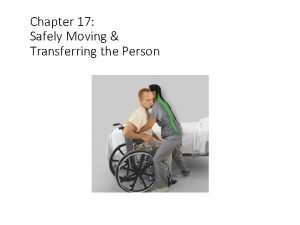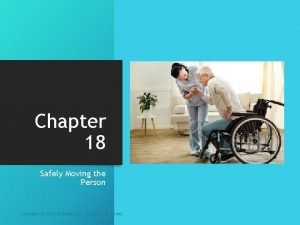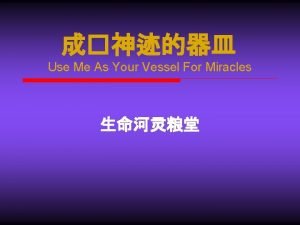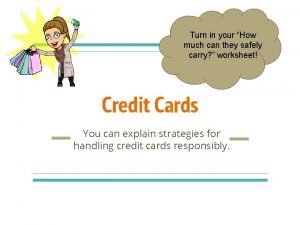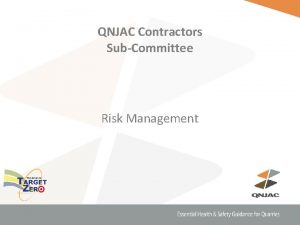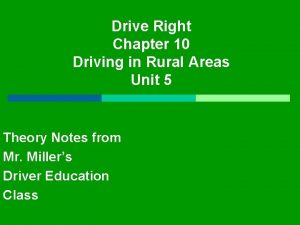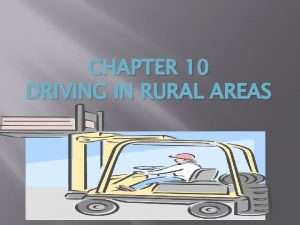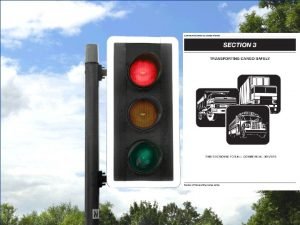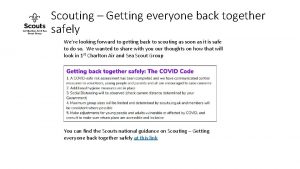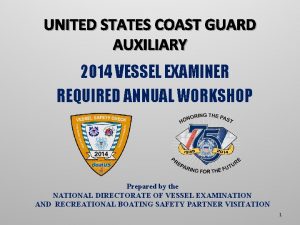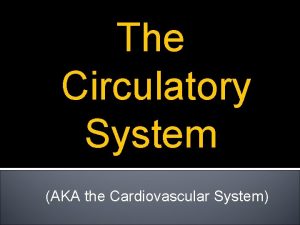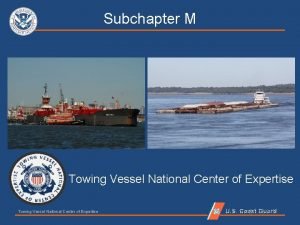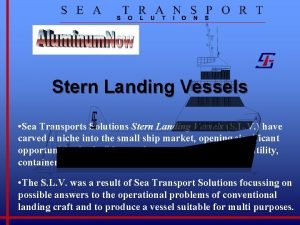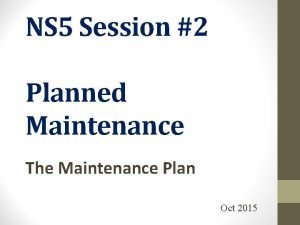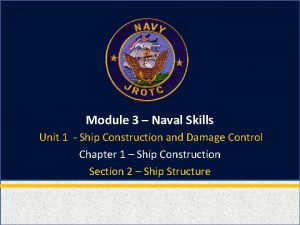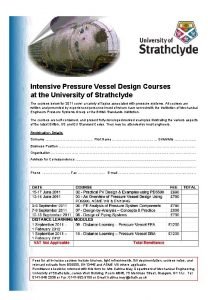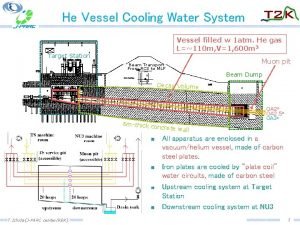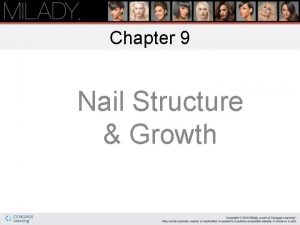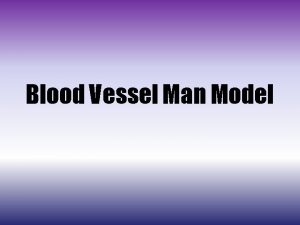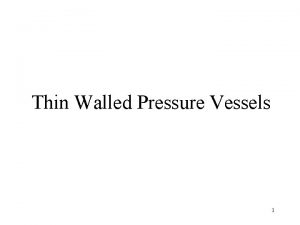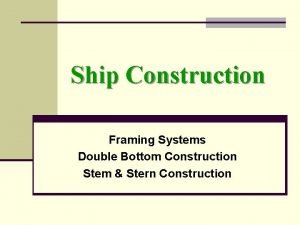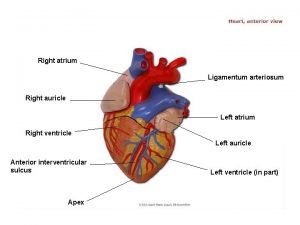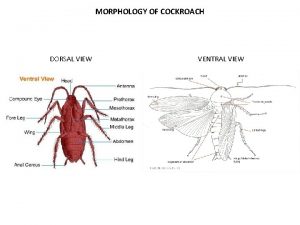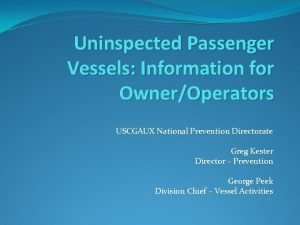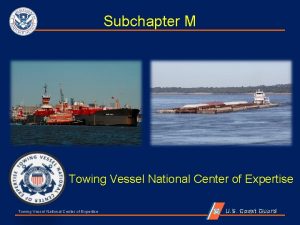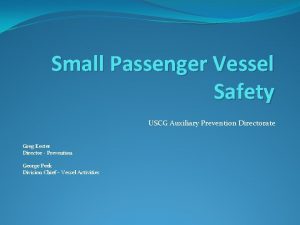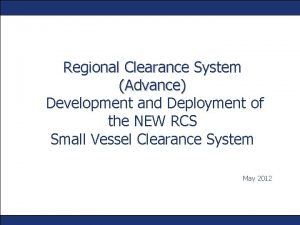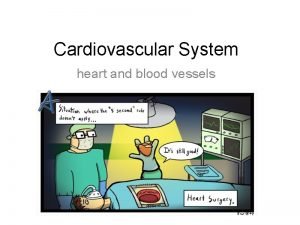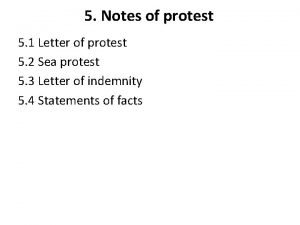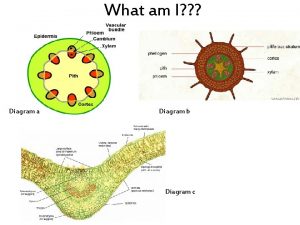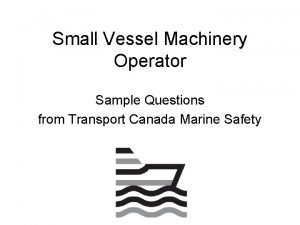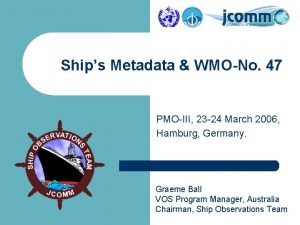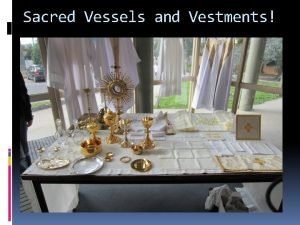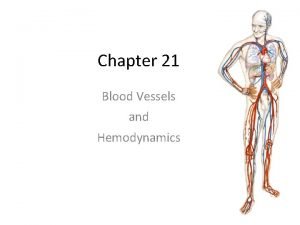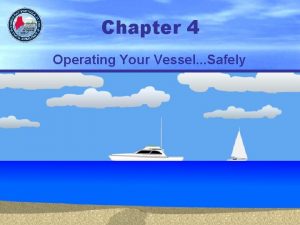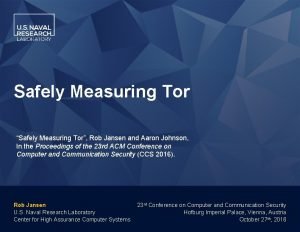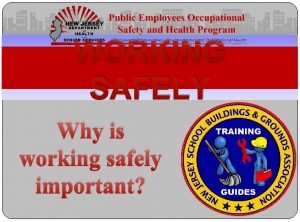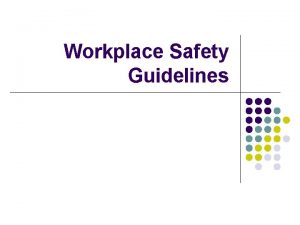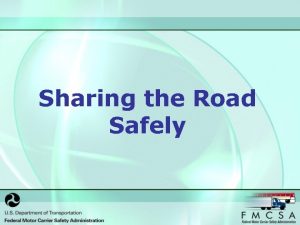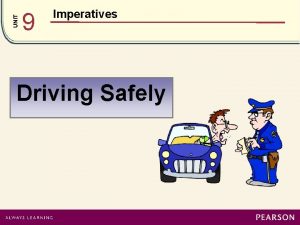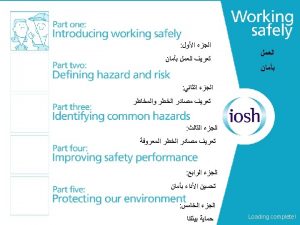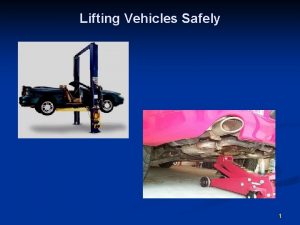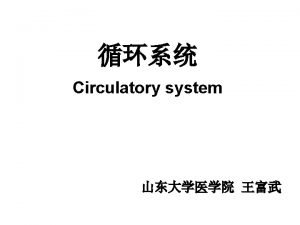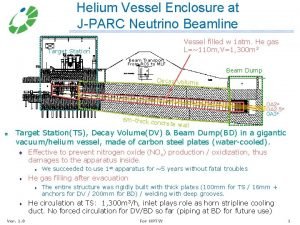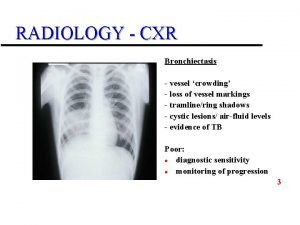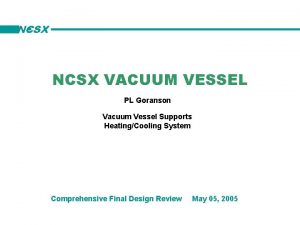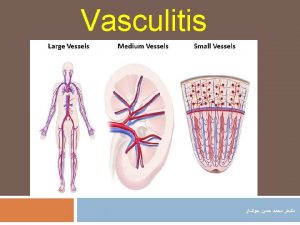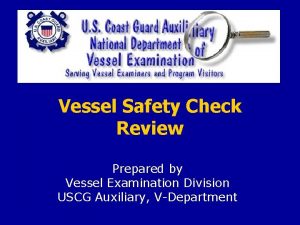Chapter 4 Operating Your Vessel Safely 1 Copyright






































































- Slides: 70

Chapter 4 Operating Your Vessel. . . Safely 1 Copyright 2005 - Coast Guard Auxiliary Association, Inc.

Operating Your Vessel…Safely • 1 • 2 • 3 • 4 • 5 Loading gear and passengers Boat Handling Courtesy on the water Casting off – docking – anchoring PWC specific safety 2 Copyright 2005 - Coast Guard Auxiliary Association, Inc.

Load Gear & Passengers Properly Accidents can happen when boarding and loading your boat 3 Copyright 2005 - Coast Guard Auxiliary Association, Inc.

Load Gear & Passengers Properly 4 Copyright 2005 - Coast Guard Auxiliary Association, Inc.

Safe Loading • 1 Keep centered in small boats • 2 “One hand for you, one hand for the boat” • 4 Load gear from the dock • 5 Trim: engine and gear • 6 Never overload 5 Copyright 2005 - Coast Guard Auxiliary Association, Inc.

How Boats Handle 1 Displacement mode - The boat is fully settled in the water - A planing boat will be at “Idle Speed” Boat Speed 6 Copyright 2005 - Coast Guard Auxiliary Association, Inc.

How Boats Handle 2 Plowing Mode - We’ve added power, the bow rises - The boat throws a significantly larger wake - Visibility could be temporarily compromised - Be especially mindful in marinas and around other boats Boat Speed 7 Copyright 2005 - Coast Guard Auxiliary Association, Inc.

How Planing Boats Handle 3 Planing Mode - The boat is riding on top of the bow wave - Efficiency is greatly increased Boat Speed 8 Copyright 2005 - Coast Guard Auxiliary Association, Inc.

Power Trim • 1 Standard on most outboards and I/O - Adjusts the angle of the drive unit The drive is trimmed in during acceleration to get you fast onto the plane and then gradually trimmed out at higher engine rpm. You get better visibility and a comfortable ride. 9 Copyright 2005 - Coast Guard Auxiliary Association, Inc.

Power Trim Inboard Boats and larger boats will often use “Trim Tabs” to adjust the ride angle both up and down and side to side 10 Copyright 2005 - Coast Guard Auxiliary Association, Inc.

Maneuvering • 1 Turning • Slow, controlled speed • 2 Backing • Slowly, stern may veer • 3 Stopping • Requires distance • Slowly! • Avoid stern wave 11 Copyright 2005 - Coast Guard Auxiliary Association, Inc.

Running Before Waves • 1 Requires: • Throttle modulation steering control 12 Copyright 2005 - Coast Guard Auxiliary Association, Inc.

Running Parallel To Waves • 1 Can cause broaching • 2 Cross wakes with care • 3 Warn passengers 13 Copyright 2005 - Coast Guard Auxiliary Association, Inc.

ENTERING INLETS • Before entering an inlet make sure the channel is marked. • Approach inlets with breaking waves with extreme caution. • Avoid entering an • unfamiliar inlet at night. The Following Slideshow Documents an actual broaching accident and fatality of an experienced Charter Captain when he misjudges the size of the wave he is attempting to cross 14 Copyright 2005 - Coast Guard Auxiliary Association, Inc.

ENTERING INLETS The boat should be riding on the back of wave, but the captain misjudges his speed causing the boat to overtake the wave and fall over the edge 15 Copyright 2005 - Coast Guard Auxiliary Association, Inc.

ENTERING INLETS Crashing over the wave causes the boat to come to a stop which allows the wave to overtake the boat 16 Copyright 2005 - Coast Guard Auxiliary Association, Inc.

ENTERING INLETS The wave rolls the boat over on its side. The captain still has hold of the steering wheel 17 Copyright 2005 - Coast Guard Auxiliary Association, Inc.

ENTERING INLETS The boat rolled 90 degrees on its side, but does not roll over. 18 Copyright 2005 - Coast Guard Auxiliary Association, Inc.

ENTERING INLETS As the wave passes under the boat, the boat snaps upright with a force strong enough to cause the captain to lose his grip which threw him overboard 19 Copyright 2005 - Coast Guard Auxiliary Association, Inc.

Crossing a Wave • Note the same type of accident as in the video can happen when a smaller vessel overtakes a larger vessel • Cross a wave at a 45 degree angle • Take extreme caution when passing large vessels 20 Copyright 2005 - Coast Guard Auxiliary Association, Inc.

COURTESY ON THE WATER • Wake is part of your boat • You are responsible for damage or injuries caused by it. • Observe posted signs and marks • Maintain safe distance & speed 21 Copyright 2005 - Coast Guard Auxiliary Association, Inc.

COURTESY ON THE WATER • Slow to idle speed when in close proximity to other boats 22 Copyright 2005 - Coast Guard Auxiliary Association, Inc.

COURTESY ON THE WATER Discuss: You are on plane in a fairly narrow channel (Green Cove Springs markers 18 & 19 are barely 100 yards between the markers. This is not a slow speed zone) You see this gentleman fishing just a few yards off the channel marker on the right. What can you do? What could happen if you do nothing? Copyright 2005 - Coast Guard Auxiliary Association, Inc. 23

HOW YOUR BOAT STEERS • NEED TO KNOW TERMS • PORT • STARBOARD • TILLER • WHEEL 24 Copyright 2005 - Coast Guard Auxiliary Association, Inc.

HOW YOUR BOAT STEERS • BOATS WITH A WHEEL • CONNECTED BY CABLES OR HYDRAULIC LINES • STEERS IN DIRECTION OF TURN • STERN DIRECTS BOW 25 Copyright 2005 - Coast Guard Auxiliary Association, Inc.

HOW YOUR BOAT STEERS • TILLER TURNS RUDDER OR OUTBOARD • BOAT MOVES IN A DIRECTION OPPOSITE THE DIRECTION OF TILLER 26 Copyright 2005 - Coast Guard Auxiliary Association, Inc.

DOCKING 27 Copyright 2005 - Coast Guard Auxiliary Association, Inc.

DOCKING • Determine direction of wind & current • Deploy fenders • Ready lines • Proceed slowly toward dock 28 Copyright 2005 - Coast Guard Auxiliary Association, Inc.

No Wind Or Current DOCKING 29 Copyright 2005 - Coast Guard Auxiliary Association, Inc.

Wind Or Current Off Docking with a spring line 30 Copyright 2005 - Coast Guard Auxiliary Association, Inc.

Docking With A Spring Line Using a Spring Line to assist with docking when wind and current make docking difficult With the Spring line looped over a cleat or piling, you now have significant control over the wind or current. Simply drive the boat ahead or astern and the boat will line itself Up with the dock 31 Copyright 2005 - Coast Guard Auxiliary Association, Inc.

Helping Others Dock The Wrong Way You will never win a tug of war with a Boat weighing several thousand pounds The Right Way Simply loop the line around the base of the cleat and pull up at a 90 degree angle. Then allow the boat captain to finish maneuvering the boat to the dock Copyright 2005 - Coast Guard Auxiliary Association, Inc. 32

Cast Off Wind Off The Dock 33 Copyright 2005 - Coast Guard Auxiliary Association, Inc.

Casting Off Wind On Dock Use bow spring to move stern into wind or current 3 2 1 34 Copyright 2005 - Coast Guard Auxiliary Association, Inc.

Cast Off Wind and Current On The Dock Here is how that works 35 Copyright 2005 - Coast Guard Auxiliary Association, Inc.

Tying To Floats And Piers 1 bow line 4 2 spring lines stern line 3 6 stern line 36 Copyright 2005 - Coast Guard Auxiliary Association, Inc. 5

Chafing Gear Prevents Line Wear • Can be cloth, rubber, leather, or plastic 2 • Old garden hose works 1 chock chafing gear 37 Copyright 2005 - Coast Guard Auxiliary Association, Inc.

ANCHORS • Select size for boat • Select type for seabed • Anchor design determines holding ability 38 Copyright 2005 - Coast Guard Auxiliary Association, Inc.

Anchor Types Lightweight (Danforth Type) Plow Single Fluke Copyright 2005 - Coast Guard Auxiliary Association, Inc. 39

Anchor Types 1 Grapnel 2 Mushroom 40 Copyright 2005 - Coast Guard Auxiliary Association, Inc.

Anchoring Guidelines Know Your Scope • 7: 1 Depth to Line Ratio • How Much line do you need in 20 feet of Water? 41 Copyright 2005 - Coast Guard Auxiliary Association, Inc.

ANCHORING GUIDELINES • Use anchor to prevent drifting • Never anchor from the stern 42 Copyright 2005 - Coast Guard Auxiliary Association, Inc.

• Allow “swing” room for wind & or current wind Setting Anchor d n i w wind 43 Copyright 2005 - Coast Guard Auxiliary Association, Inc.

Setting Anchor • 1 What are the steps? 1. Place rode on deck. 2. Lower anchor to bottom. 3. Slowly back away. 4. Stop when req’d. length is deployed. 44 Copyright 2005 - Coast Guard Auxiliary Association, Inc.

Retrieving Anchor • 1 What are the steps? 1. Pull in rode while moving up with power. 2. Crew on bow points To anchor for helmsman 3. Stop over anchor 4. Pull up anchor. 45 Copyright 2005 - Coast Guard Auxiliary Association, Inc.

Operating Personal Watercraft • 1 How are PWCs different from powered boats? Steering and stopping: • PWC steered by water being forced through steering nozzle at back of unit • Remember you must always have power in order to maintain steering control • Always allow plenty of room for stopping 46 Copyright 2005 - Coast Guard Auxiliary Association, Inc.

Operating Personal Watercraft • 1 What courtesies should PWC operators show? 47 Copyright 2005 - Coast Guard Auxiliary Association, Inc.

Do Not Jump Wakes 48 Copyright 2005 - Coast Guard Auxiliary Association, Inc.

Operating Personal Watercraft • 1 What are some environmental concerns? Noise Fuel Leakage from tipping over Damage to Seagrass In shallow areas Wake Damage especially when going Slow. (PWCs typically make a larger wake just above idle speed) 49 Copyright 2005 - Coast Guard Auxiliary Association, Inc.

Other PWC Considerations • 1 • 2 • 3 • 4 Observe state laws Always wear your PFD Inspect your watercraft frequently Keep hands and feet away from pump intake and discharge • 5 Do not exceed capacity ratings • 6 Know your limits • 7 Ride according to your ability 50 Copyright 2005 - Coast Guard Auxiliary Association, Inc.

Capsized PWC • 1 Know how to right the PWC properly • 2 Read the owners manual 51 Copyright 2005 - Coast Guard Auxiliary Association, Inc.

Capsized PWC • 1 Decals on stern show direction of rotation 52 Copyright 2005 - Coast Guard Auxiliary Association, Inc.

Safety Lanyards • 1 Attached to operator or PFD 53 Copyright 2005 - Coast Guard Auxiliary Association, Inc.

Safety Lanyards 1 54 Copyright 2005 - Coast Guard Auxiliary Association, Inc.

MANATEES • • ENDANGERED SPECIES FLORIDA MANTAEE SANCTUARY ACT • ESTABLISHED MANATEE PROTECTION BOAT SPEED ZONES • VESSEL EXCLUSION AREA • IDLE SPEED • SLOW SPEED • DO NOT HARASS, DISTURB, COLLIDE WITH, INJURE OR HARM MANATEES • UP TO $50, 000 FINE AND OR 1 YEAR IN JAIL 55 Copyright 2005 - Coast Guard Auxiliary Association, Inc.

MANATEES • TO REPORT MANATEE DEATHS, INJURIES, OR ORPHANED CALVES CALL THE FLORIDA FISH & WILDLIFE CONSERVATION COMMISSION 1 -888 -404 -3922 • THIS DISTANCE IS NOW 7001000 FEET FROM SHORE AS YOU MOVE FROM DOWNTOWN AREA TO SOUTH OF JULINGTON CREEK • A Manatee coming up for a breath of air. Notice the ripples on the surface. 56 Copyright 2005 - Coast Guard Auxiliary Association, Inc.

Chapter 4 Review 57 Copyright 2005 - Coast Guard Auxiliary Association, Inc.

Review Exercises • Under normal conditions, the recommended scope of an anchor line should be approximately: 1 a • 25: 1 b • 15: 1 c • 7: 1 d • 2: 1 58 Copyright 2005 - Coast Guard Auxiliary Association, Inc.

Review Exercises • A spring line is a dock line that: 2 a • has an inner core of stretchy elastic material. b • keeps a boat from moving ahead or astern. c • is only used in March, April, and May. d • holds the boat directly to the pier at amidships. 59 Copyright 2005 - Coast Guard Auxiliary Association, Inc.

Review Exercises 3 • The correct anchor for your boat will depend not only on the size and type of your boat but on the: a • cost (always purchase the cheapest anchor available). • size and length of your anchor rode. b • types of seabed and amount of wind and current you c expect to encounter. • location (bow or stern) from which you anchor. d 60 Copyright 2005 - Coast Guard Auxiliary Association, Inc.

Review Exercises 4 • You can ease the shock on both boat and crew when running into waves by slowing down and: a • taking the waves at an angle to the bow, not head-on. b • turning the boat broadside to the waves for stability. c • taking the waves head-on and not at an angle. d • instructing all passengers to stand up in the boat. 61 Copyright 2005 - Coast Guard Auxiliary Association, Inc.

Review Exercises 5 • Never anchor a boat from the stern alone because: a • waves may come over the transom and swamp the boat. b • the bow should always be pointing away from the wind. c • it is difficult to adjust the rode for proper scope. d • it is difficult to bring persons over the bow in an emergency. 62 Copyright 2005 - Coast Guard Auxiliary Association, Inc.

Review Exercises • 6 When docking and undocking your boat it is desirable to plan the procedure in advance and: a • always operate your boat at cruising speed. b • give instructions in a loud authoritative tone so that crew will know who is in charge. c • approach slowly against the wind or current for more control of your boat. d • teach the crew how to keep the boat away from the pier using their arms and legs. 63 Copyright 2005 - Coast Guard Auxiliary Association, Inc.

Review Exercises 7 • Which of the following statements is true? a • PWCs do not disturb the ecology of the water bottom. b • Wake from PWCs will not contribute to shoreline erosion. c • Noise from PWCs never disturbs bird life. d • As when operating any boat, having consideration for others is most important when operation a PWC. 64 Copyright 2005 - Coast Guard Auxiliary Association, Inc.

Review Exercises • 8 Because of their different operating characteristics, some states consider PWCs to be a special type of boat and have special regulations for them. As a PWC owner or operator you must: a • carry a copy of the rules of the special PWC Rules Commission on board. b • know the special Navigation Rules that apply only to PWCs. c • follow the rules established by the National Boating Association. d • be aware of and abide by all laws governing the use of personal watercraft in your area. 65 Copyright 2005 - Coast Guard Auxiliary Association, Inc.

Review Exercises • 9 Steering a PWC involves turning a movable nozzle that directs a high pressure stream of water either right or left, turning the boat to one side or the other. It is important to know that a PWC will turn only when the: a • engine is turning at least 4000 rpm. b • jet pump is operating and pushing a stream of water. c • two rudders are in contact with the water. d • special steering pump is activated. 66 Copyright 2005 - Coast Guard Auxiliary Association, Inc.

Review Exercises • A PWC lanyard cut-off switch when fastened to your wrist will: 10 a • keep your signal whistle where it can be found. • alert you when you are running too fast. b • stop the engine when you fall off. c • remind you to always wear you life preserver. d 67 Copyright 2005 - Coast Guard Auxiliary Association, Inc.

Review Exercises • 11 Because the Coast Guard recognizes personal watercraft as full fledged boats: a • operators must adhere to the same rules and regulations as large boats b • a PWC must show its navigation lights when used after dark. c • PWCs usually have priority of movement in meeting and crossing situations. d • PWCs are exempt from all boating rules and regulations. 68 Copyright 2005 - Coast Guard Auxiliary Association, Inc.

Review Exercises • 12 Constantly watch the wake of your boat, because: a • it can disturb the smooth operation of personal watercraft. b • your wake must never be more than three inches high. • you are responsible for injuries or damage to property c caused by the wake of your boat. • you may see beautiful colors created by the oxidation d of phosphorus in the water. 69 Copyright 2005 - Coast Guard Auxiliary Association, Inc.

End Chapter 4 70 Copyright 2005 - Coast Guard Auxiliary Association, Inc.
 Chapter 19 moving the person
Chapter 19 moving the person Chapter 19 safely transferring the person
Chapter 19 safely transferring the person When a person is logrolled the person is
When a person is logrolled the person is Chapter 18 safely moving the person
Chapter 18 safely moving the person Chapter 19 lesson 2 using medicines safely
Chapter 19 lesson 2 using medicines safely Use me as a vessel
Use me as a vessel Ubrs training
Ubrs training How much can they safely carry
How much can they safely carry No job is so important that it cannot be performed safely
No job is so important that it cannot be performed safely Drive right chapter 10 answer key
Drive right chapter 10 answer key Chatting safely online
Chatting safely online No job is so important that it cannot be done safely
No job is so important that it cannot be done safely Chapter 10 activity 10-1 drivers ed
Chapter 10 activity 10-1 drivers ed Quotes from macbeth act 3 scene 1
Quotes from macbeth act 3 scene 1 Transporting food safely
Transporting food safely Work safely
Work safely The spot where you can no longer stop safely is
The spot where you can no longer stop safely is Name two basic reasons for covering cargo on an open bed
Name two basic reasons for covering cargo on an open bed Getting everyone back together safely
Getting everyone back together safely Turner v safely
Turner v safely Going places safely
Going places safely Give us your hungry your tired your poor
Give us your hungry your tired your poor Unit 5 operating your business lesson 1 funding sources
Unit 5 operating your business lesson 1 funding sources Blood vessels adaptations
Blood vessels adaptations Coast guard auxiliary test answers
Coast guard auxiliary test answers Smallest blood vessel
Smallest blood vessel 3 parts of the circulatory system
3 parts of the circulatory system 46 cfr subchapter w
46 cfr subchapter w Sea transport solutions stern landing vessel
Sea transport solutions stern landing vessel Vessel planned maintenance system excel
Vessel planned maintenance system excel Internodium neuron
Internodium neuron Navy vessel one feels constricted in
Navy vessel one feels constricted in Cold stretching cryogenic vessel
Cold stretching cryogenic vessel Pressure vessel design course
Pressure vessel design course Vessel cooling
Vessel cooling Ship arrangement plan
Ship arrangement plan Vessel 2012
Vessel 2012 Lima vessel of the heart
Lima vessel of the heart What are the nine parts of the nail unit
What are the nine parts of the nail unit Arteries
Arteries Angi vessel
Angi vessel Could 131g of xenon gas in a vessel
Could 131g of xenon gas in a vessel Vessel traffico marittimo
Vessel traffico marittimo Sea vision vessel
Sea vision vessel Thin walled pressure vessel definition
Thin walled pressure vessel definition Framing system of ship
Framing system of ship Old woman young woman
Old woman young woman Right atrium
Right atrium Ventral view of a cockroach
Ventral view of a cockroach Efferent lymphatic vessel
Efferent lymphatic vessel Blood vessel layers
Blood vessel layers On urdu
On urdu Uninspected passenger vessel
Uninspected passenger vessel Towing vessel national center of expertise
Towing vessel national center of expertise Passenger vessel safety act of 1993
Passenger vessel safety act of 1993 Ship clearance system
Ship clearance system Circle of willis labeling quiz
Circle of willis labeling quiz Structure of heart wall
Structure of heart wall Ped vessel code
Ped vessel code Vessel of tainted blood
Vessel of tainted blood Letter of protest format
Letter of protest format I
I Blood-filled vessel
Blood-filled vessel Small vessel machinery operator program
Small vessel machinery operator program Wmono
Wmono Global vessel tracking
Global vessel tracking The vascular vestment
The vascular vestment Vessel lights and shapes quiz
Vessel lights and shapes quiz Scalariform
Scalariform Arterioles function
Arterioles function Sieve tube
Sieve tube

